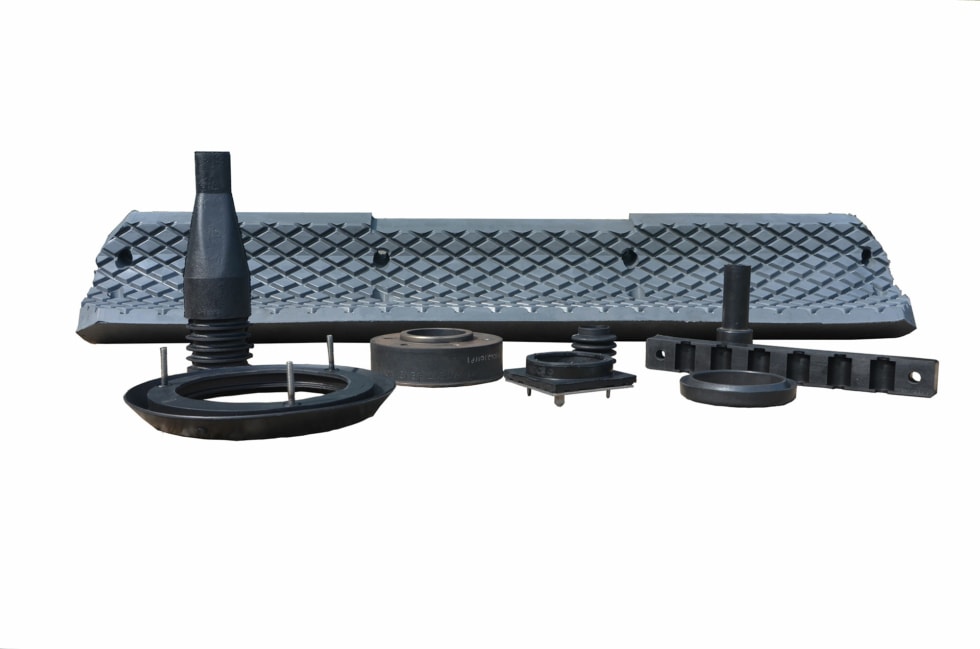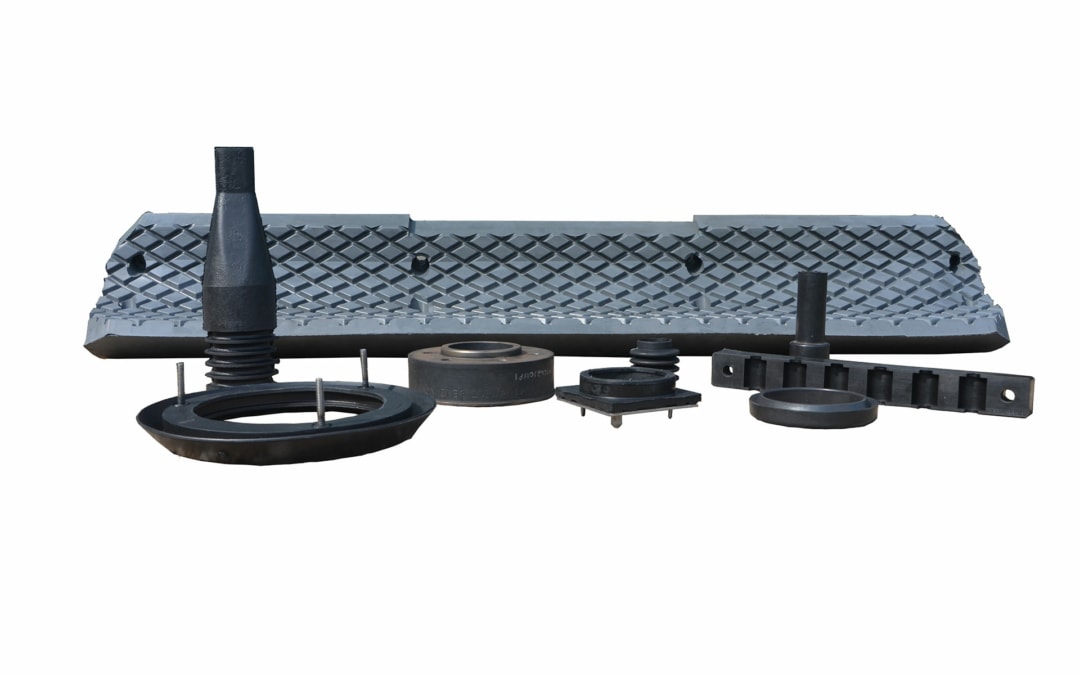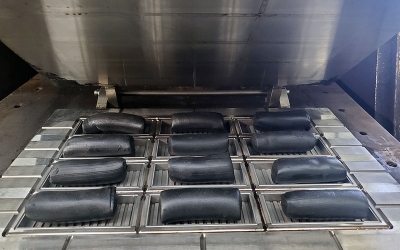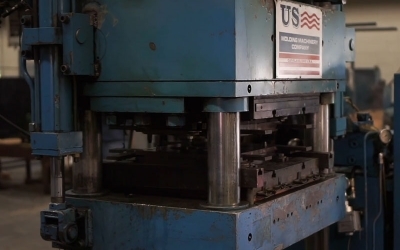Rubber Manufacturing at Lake Erie Rubber

American Rubber Manufacturing at Lake Erie Rubber
Design to Production Rubber Manufacturing Services
Lake Erie Rubber is an American rubber manufacturer located in Erie, PA, with over six decades of experience and a complete team of knowledgeable engineers, chemists, and industry professionals. As an incredibly versatile material, rubber has and will continue to play a major role in various industries and the overall advancement of society from rubber gloves to vehicle tires. Lake Erie Rubber provides the following rubber manufacturing services with a focus on expedited production, superior quality, and industry-leading technical expertise.
- Injection Molding
- Compression Molding
- Transfer Molding
Using both natural and synthetic rubber, Lake Erie Rubber will work with you to quickly and efficiently produce highly precise rubber components and parts through one or all of these methods.
Synthetic & Natural Rubber Manufacturing
Before diving into the specific rubber manufacturing processes, it is important to note the distinctions between synthetic rubber and natural rubber. While there are many specific types of rubber, there are two broad classifications of the material that all others fall underneath. Those two categories are natural rubber and synthetic rubber. Natural rubber is derived from the hevea tree and became a critical part of industrial advancement in 1839 when Charles Goodyear improved the vulcanization process to modify natural rubber so it could withstand extreme temperatures. With this progression, natural rubber could now be used in a variety of new applications including hoses, rubber-soled shoes, elastic fabrics, and eventually, automobile tires.
Due to a global natural rubber shortage during World War II, synthetic rubber development from chemical precursors quickly surged in popularity and applications. While there are several types of synthetic rubber (EPDM, SBR, NBR, and more) the basic construct refers to a range of polymers created from petrochemicals. Synthetic rubber manufacturing starts with a mixture of hydrocarbons that result in the formation of naphtha. Naphtha is combined with natural gas to create the specific monomers that define the end synthetic rubber product. A few of these monomers are butadiene, styrene, isoprene, and propylene. The mixture is further polymerized with the aid of added heat and a catalyst to create a chain of polymers that result in rubber.
Both natural and synthetic rubber remain widely used in rubber manufacturing processes today. Natural rubber offers a higher tensile strength, improved tear resistance, reduced odor, and a lower material cost than synthetic rubber. Comparatively, synthetic rubber and its many variations offer chemical, fluid, ozone, and electrical resistance that natural rubber cannot. Synthetic rubber also provides improved resistance to extreme temperatures and prolonged performance in these environments.
Injection Molding
Once the source material of rubber is determined, there are three specific rubber manufacturing processes utilized by Lake Erie Rubber to further transform rubber into a final product. The first of these processes is injection molding. Injection Molding can be used for the mass production of high-precision rubber parts in an efficient and most importantly, repeatable manner.
Rubber manufacturing with injection molding takes uncured rubber and transforms it into a usable product by injecting metal mold cavities with raw rubber material. Between the applied pressure and heat, the chemical process of vulcanization takes place and works to cure the rubber to achieve the desired finished properties. As a rubber manufacturing process, injection molding offers several advantages that include reduced prices on mid to high-volume components, suitable for precision parts, a variety of usable materials, and reduced cycle times. Alternatively, the initial setup cost to design and manufacture the required tooling for injection molding is a slight disadvantage against other rubber manufacturing processes at Lake Erie Rubber.
Lake Erie Rubber offers custom injection molding services to several markets that have expanded to include construction, mining, railway, vibration dampening, and even the pet product industry.
Compression Molding
The second distinct rubber manufacturing service offered by Lake Erie Rubber is compression molding. A simple way to visualize and understand compression molding is to compare it to a waffle maker. Uncured rubber is placed into a mold cavity where heat and pressure are applied to both sides of the mold to create a shaped part. Thanks to this rather rudimentary process, compression molding is an extremely versatile rubber manufacturing process that can be ideal for larger products that require a smaller production cycle.
Compared to injection molding, compression molding rubber manufacturing has a lower initial tooling cost mostly due to the size of components crafted through the process and a less intricate design. Compression molding does allow for an over-mold, or for rubber to be bonded to metal or other material components. Rubber grip handles on metal hand tools or power tools are excellent examples of products that may undergo compression molding for over-mold capabilities.
Transfer Molding
Transfer molding combines the advantages of the two previously mentioned types of rubber manufacturing into a singular process. To start, the required uncured material is measured, cut, and placed into the “pot” of the transfer mold, and the entire mold is then placed into a press. A plunger compresses the uncured rubber at the same time heat is applied to push the rubber through narrow channels known as sprues, into the mold cavities. The rubber is contained in the heated cavities for a specific amount of time to allow the product to properly cure and take the desired shape. Once cured, the transfer molded rubber is removed and trimmed of excess material.
Transfer molding provides advantages over compression molding and injection molding. Most notable among these advantages is the ability to produce highly precise components with complex features. Transfer molding utilizes a higher clamping pressure than compression molding, allowing the heated rubber to fill the design with minimal excess material, or flash, seeping out. Furthermore, rubber manufacturing with transfer molding is highly suitable for over-molded production with additional metal, glass, plastic, or electronic components. As a result, transfer molding is very common in the manufacturing of the production of electronic components as well as high-precision rubber gaskets, seals, nozzles, and valves. Lake Erie Rubber provides custom transfer molding rubber manufacturing services to rail, mining, construction, oil, and gas industries throughout the United States.
High-Quality Rubber Manufacturing
Rubber manufacturing is a continually evolving process that requires modern equipment and skilled operators to produce high-quality rubber components. Whether through injection molding, compression molding, or transfer molding, Lake Erie Rubber is capable of devising a comprehensive rubber manufacturing strategy to deliver products of premium precision both ahead of schedule and under budget. With a stable, regional, and highly responsive supply chain, Lake Erie Rubber can meet strict product requirements with reduced lead times over the competition. Additionally, we offer high-level access to qualified technical support to help make decisions on appropriate materials, rubber manufacturing methods, and tooling design. Whether you are looking to improve upon an existing product or start the design process for a new item, our team will create a custom-tailored solution that meets your needs and keeps costs affordable.




